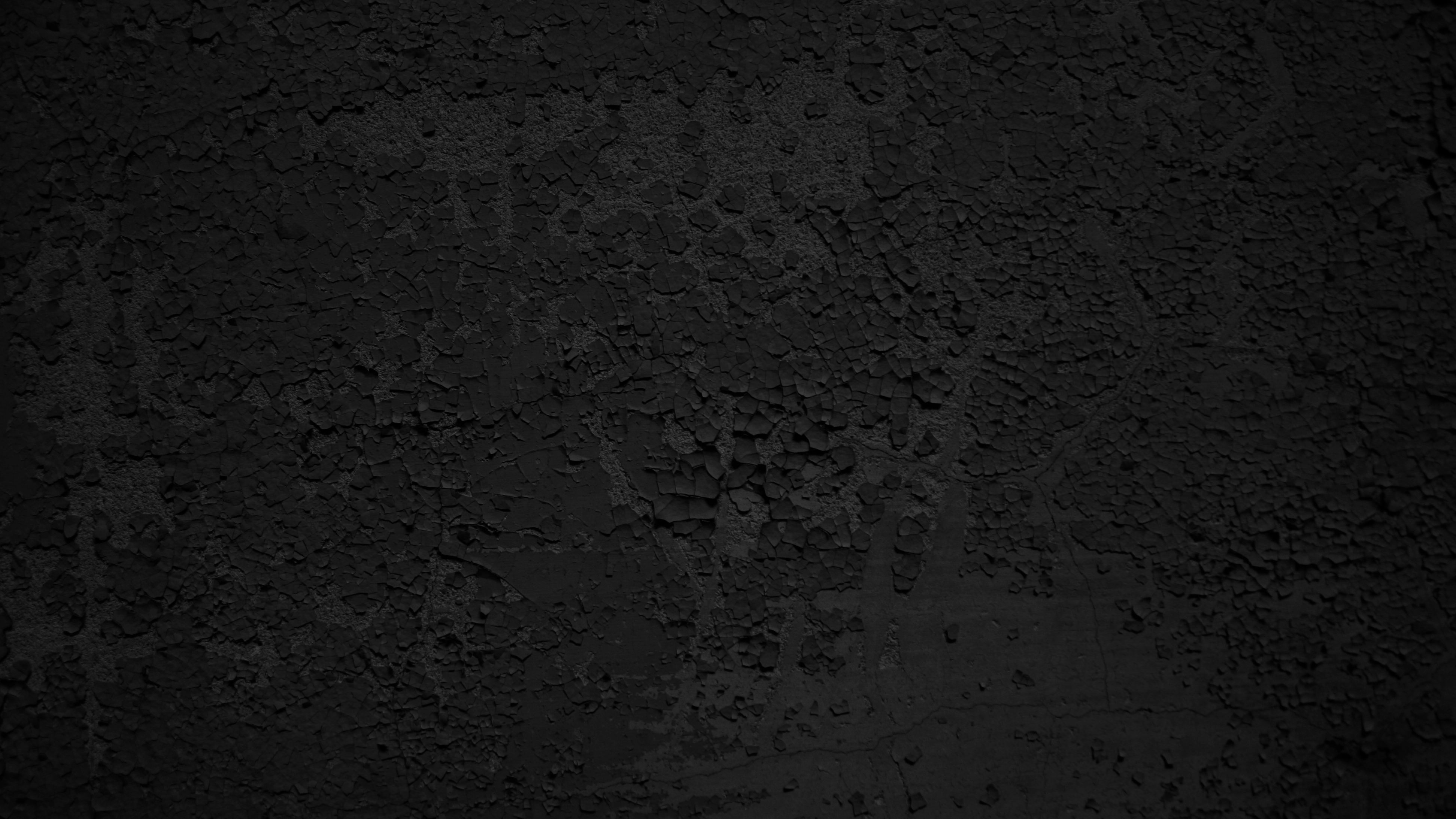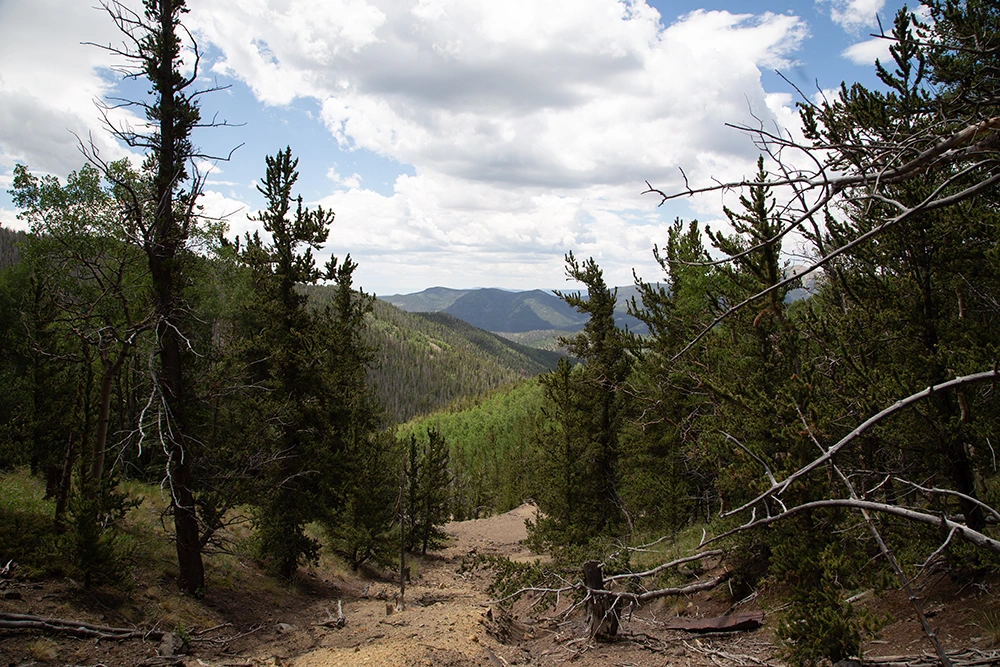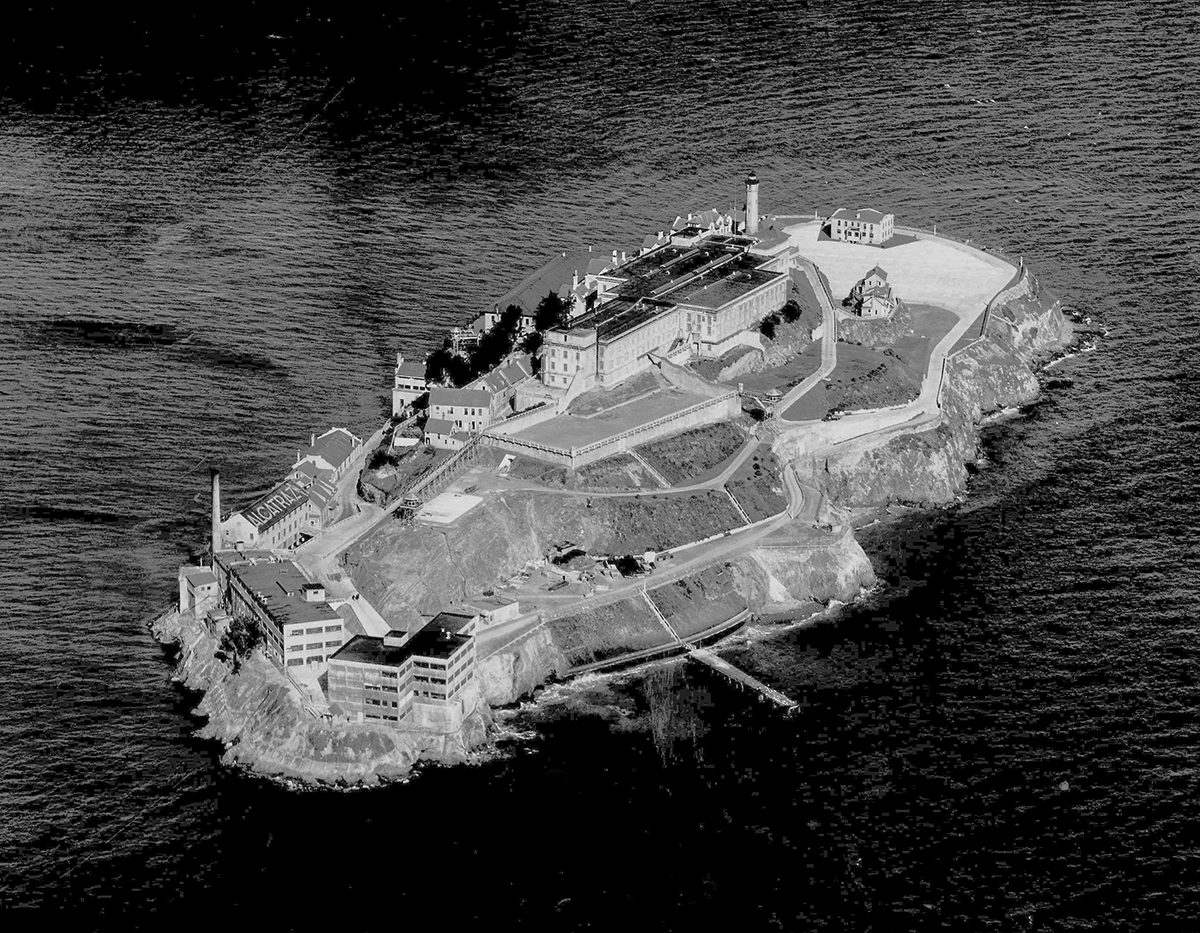Sunday, July 13, 2025
The Como Roundhouse was built by Italian stonemasons in Como, Colorado, in 1881. It is said to be the oldest operating roundhouse in the United States. It originally had 6 stalls but by 1900, a wooden addition (which no longer exists) brought the total number of stalls up to 19. In addition to the roundhouse, the site also includes the associated Train Depot and Como Hotel. The Como Train Depot was built in 1879 and the first train arrived on June 21st of that year. The current hotel was built in 1897 after the original one burned down and the more plain structure, built on the original foundation, replaced it. Train service to Como ceased in 1939 after which the roundhouse, depot and hotel were abandoned.
By the 1970s, the entire site was ruinous and would likely not exist today if not for the work of various individuals and groups over the years who have poured their own time and money into restoration efforts. All work is done by passionate volunteers who work tirelessly to preserve and honor the history of the area. It is the opinion of this author that these volunteers are not only doing great work, but they are living out the wildest dreams which lie just under the surface of every man; they are directly restoring/repairing/rebuilding a unique historic site which includes but is not limited to old locomotives and related machinery. Hell yes. Speaking of which, the roundhouse obtained a Baldwin steam locomotive some time ago. Her name is Klondike Kate and she had been abandoned and rusting away in a field in Oklahoma before being brought to Como where she was operational for some time until a recent piston failure took her out of commission. Klondike Kate is currently being rebuilt in the shops at Como. As if that's not enough, there's even a handcar which you can drive a short distance and back down the tracks. The massive turntable is one of the more obvious examples of the restoration work done here; a few years ago it was dismantled and the pit was filed with debris. Now, it can be effortlessly rotated by hand as it spins around smoothly on rebuilt bearings.
The Como Roundhouse is a must-see location for anyone who likes history and/or trains. Being a volunteer force, they are only open certain days/times but generally have an open house about once a month. I highly recommend visiting and making a donation. Currently, the roundhouse and train depot are both made available for vistors during the monthly open house. The hotel remains boarded up at this time. Future plans for the site include restoration of the hotel, to the point that rooms could be made available, and maybe even a restaurant or brewpub operating out of the former kitchen. Maybe someday, they'll even extend the current tracks and run a small railroad out of it-but that's currently beyond the scope of the project.
Source: South Park Rail Society
Historic Photos of Como Roundhouse


End Historic Photos
Como Train Depot
Como Hotel
Labels: colorado, coololdstuff, historic, industrial, railroad, roundhouse, train station
Friday, August 4, 2023
Colorado Trip Report
I have once again travelled to the wild and distant lands of Colorado Territory to bring back tales of adventure and photographs of the same. Read on below for some dumb stories I have to tell and join me in stupid adventures!
Click here for the video.
In 2017 I made my first trip to Colorado to explore The Ghost Town of Gillman Colorado along with the mine structures below. Underestimating the terrain, I legitimately risked our lives (a few different times) by not being prepared from the outset. This led to a series of unforunate events. I learned a valuable lesson that day, which I promptly forgot and then re-learned again when I was nearly search-and-rescued on our trip to The Skaguay Hydroelectric Power Plant. Woops. The lesson is simple: Nothing is easy in Colorado. About a year had passed since I explored around Leadville, so naturally I forgot all about those prior lessons despite the added difficulty doing it alone, fresh out of surgery with a broken collarbone... I'm very stupid and I can't resist a good adventure. Okay? I have Adventuritis. It's a thing.
I had actually made a decent legitimate discovery of an accessible mine entrance deep underground (on the aforementioned broken collarbone trip) and I was planning to follow up on, and explore it, this time around. It was actually the main objective for this year's trip. Here's the tantalizing reconnaissance photo I took while not yet healed, wearing a sling, and unable to really do anything about it:
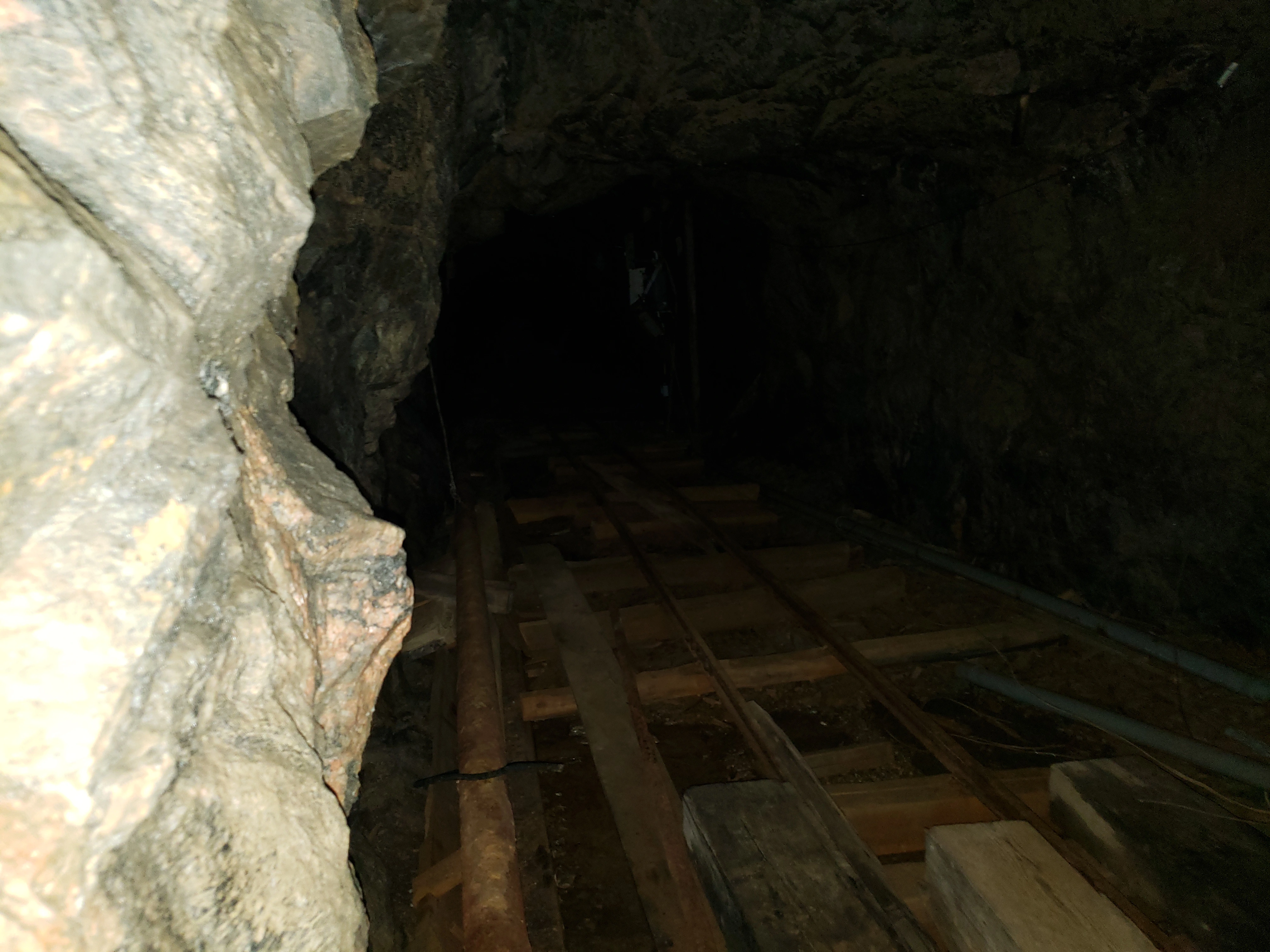
DISCLAIMER: Abandoned mines actively want to kill you. Bad air will kill you before you get very far inside them. Random unarked thousand foot shafts hidden in the woods and any other number of things at these sites can also kill you if you get too close. Risking your life often means risking your rescuer's life and that makes you an asshole. Don't be an asshole and don't try this at home!
I promise I'll wrap this up soon. So I found this awesome death trap, right? I'm super excited because I frickin love awesome death traps but my dominant arm was in a sling and I may be an idiot but I'm not an asshole. I wasn't prepared regardless of the injury. But if I wasn't crippled... I might have gone further inside. Which might have killed me. Which would make me an asshole. It's a finer line than you'd think.
As luck would have it, the mine was sealed not long before I returned. I heard the news in advance and verified myself in person. It had a shiny new metal gate/lock/etc. A significant new development for me this time around was that I had finally met some like-minded Coloradoans. Until now, I have been doing Colorado alone or with only people I brought with me (research/scouting/etc was also a solo activity). So I was fortunate to learn about it being freshly sealed while I still had a little time to find a plan B. Note that I will refrain from publicly identifying the aforementioned main objective.
With the Colorado underground once again eluding me, I did some digging and picked out what was among the most complete set of ruins I could find in satellite imagery, while also not being a well-known high traffic location. As it turns out, this place was a semi-popular 4x4 offroading trail. But aside from some shaky off-roading footage and not much in the way of articles/photos/information of the mines in the area, it seemed otherwise nowehere near as well documented as a lot of others. I visited the first of the structures, which was larger than, but separate from, the main bulk of the other stuff out here. Explored it without issue, though the road was already surprisingly rough at this point. Unfortunately, we didn't rent a Jeep* this time to save money.. and that cost me considerably. To get to the main concentration of structures, I drove the Santa Fe further up some genuinely dangerous trails that were barely over one lane in width and which featured guaranteed death, or a close approximation thereof, if you slipped over the edge. It got worse from there and by the time I decided to bail, I had to reverse a considerable distance to get to the nearest switchback where I could park the car safely and hike the rest of the 2 miles up to the site. *Note that this isn't a Jeep commercial, but on the last trip I was fortunate enough to have one. I had ended up driving through creek beds through the mountains to reach a few spots and the Jeep couldn't have done a better job getting over and through it all.
Once again, I had failed to appreciate the Colorado terrain. But this was my one day to really go for it on this trip and so I went for it on foot after nervously reversing the definitely-not-a-jeep into a suitable spot. I brilliantly also decided to leave my water because I didn't have room in my camera bag. I was expecting the structures to be at the base of the valley and all at similar elevation. And I was wrong. The hike in was entirely uphill and felt longer than 2 miles. By the time I got to the valley, I realized, that after first driving, then ditching the vehicle and hiking the rest of the way, how high up I was already when I could see what looked like an entire mountain range beyond the valley at roughly the same height as I was. And then I looked up and saw the next locations I had pinned were considerably higher up. I was doing ok but definitely feeling the altitude and the lack of oxygen. I explored everything on this level and made the steep climb up to the next. And then I climbed up to and explored the next one but by that point I was definitely questioning how much more I could do. There had been no cell service and I had seen no other humans for hours already and I was finding it increasingly difficult to catch my breath. I took frequent breaks and pushed onward and upward.
I hadn't even gotten to "the good stuff" yet, or what I envisioned to be the good stuff based on satellite views, and I began to feel a little off. I argued with myself and attributed it to psyching myself out and climbed further. I could barely take a couple steps without needing to stop so I could breathe and calm my heart back down. The most complete mining structure I had seen yet on this hike stood above me with a group of other buildings close by. I got almost close enough to throw a rock up to it, but in the end it eluded me. I already felt light-headed and knew that I had pushed my luck. I later realized I was at around 11,000 feet in elevation and I don't know if I just wasn't acclimated or what but it was affecting my ability to physically overcome the terrain and breathe at the same time. I had no water and I had been hiking for hours and it was a much more strenuous hike than I had expected. So I decided to turn back, be grateful, and just get back alive. I strongly preferred to do this without first losing consciousness.
This place wasn't exactly like finding a lost pirate ship in the mountains that nobody knew about but it was still a fun and adventurous trip. And while I didn't get to see what I felt would be the minimum acceptable number of structures I had planned to visit out here, I still got to put a check mark next to this one and return home safely.
The last two photos are: looking up at "the good stuff" (maybe?) and: the view of my elevation in the mountains around me at the point in which I turned back, respectively. I would like to add that they are both much higher in elevation (relatively as well as geographically) than they appear in photos. I was really high, I swear!
Bonanza Mine and Mill
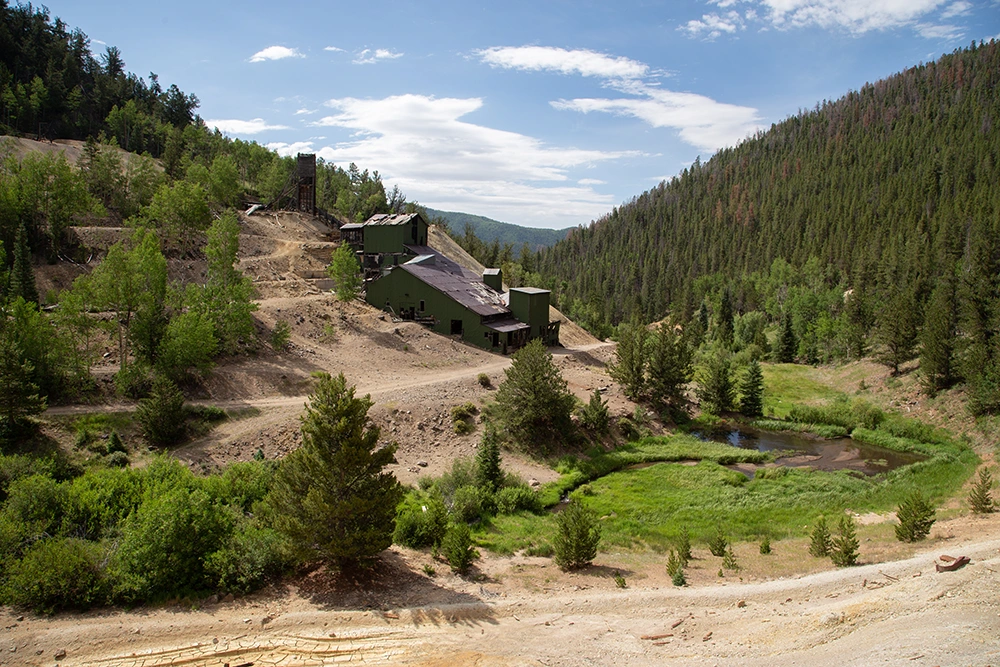
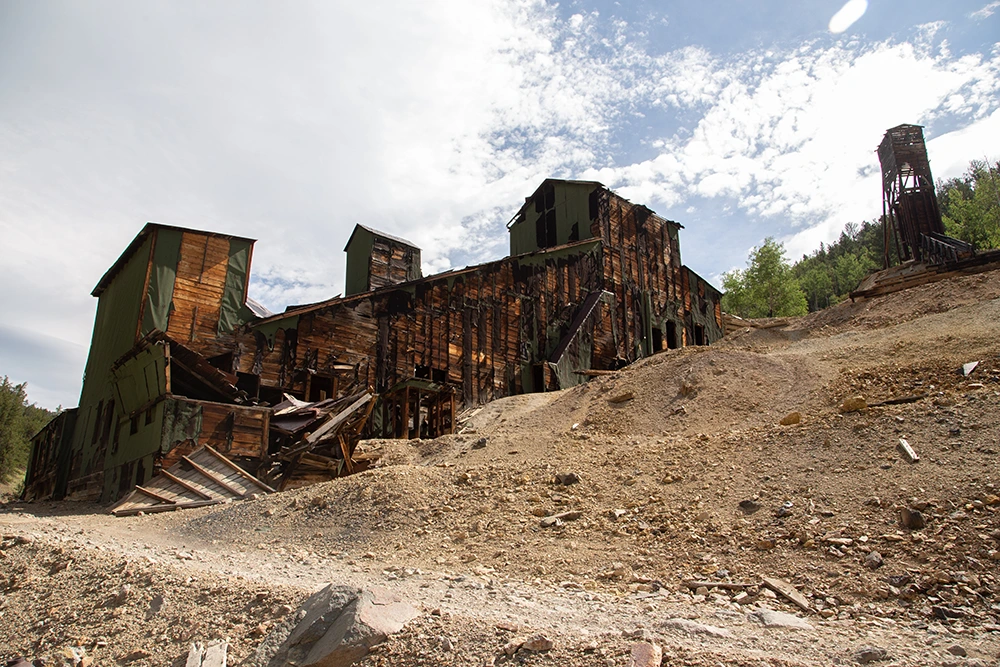
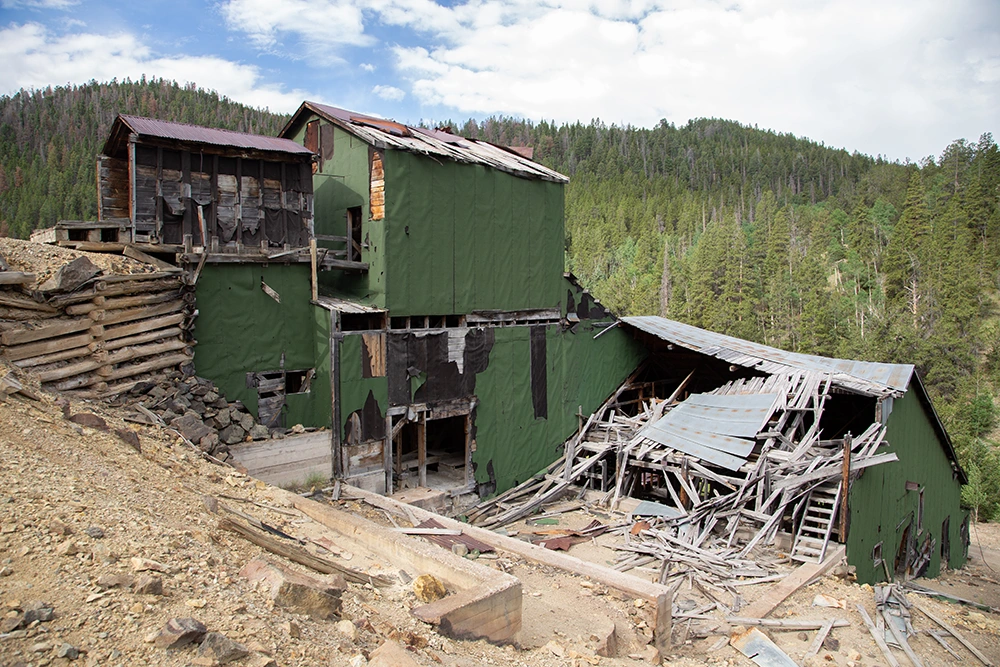
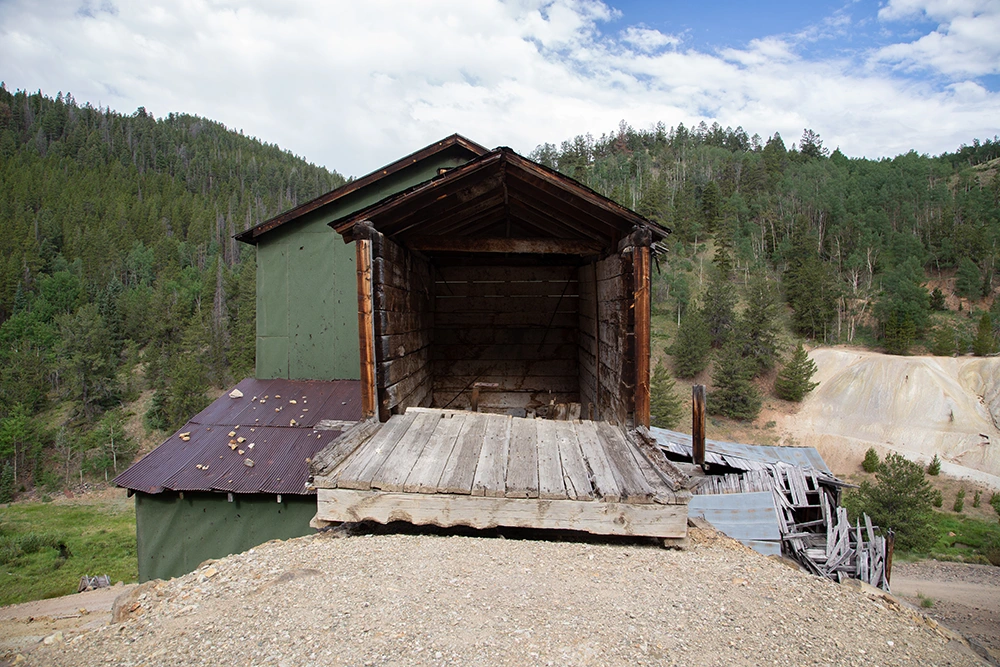
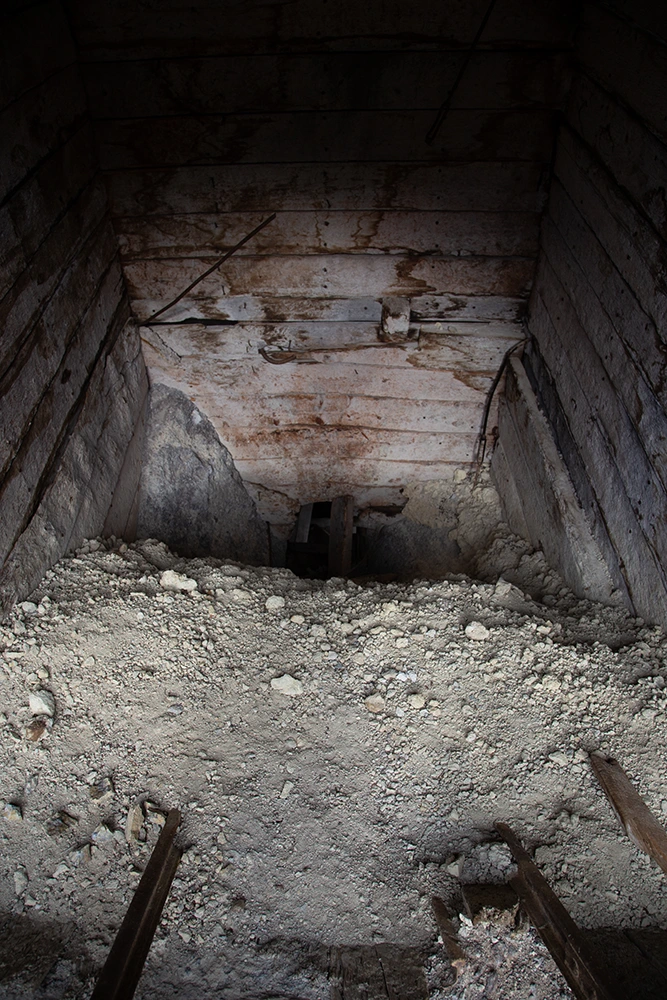
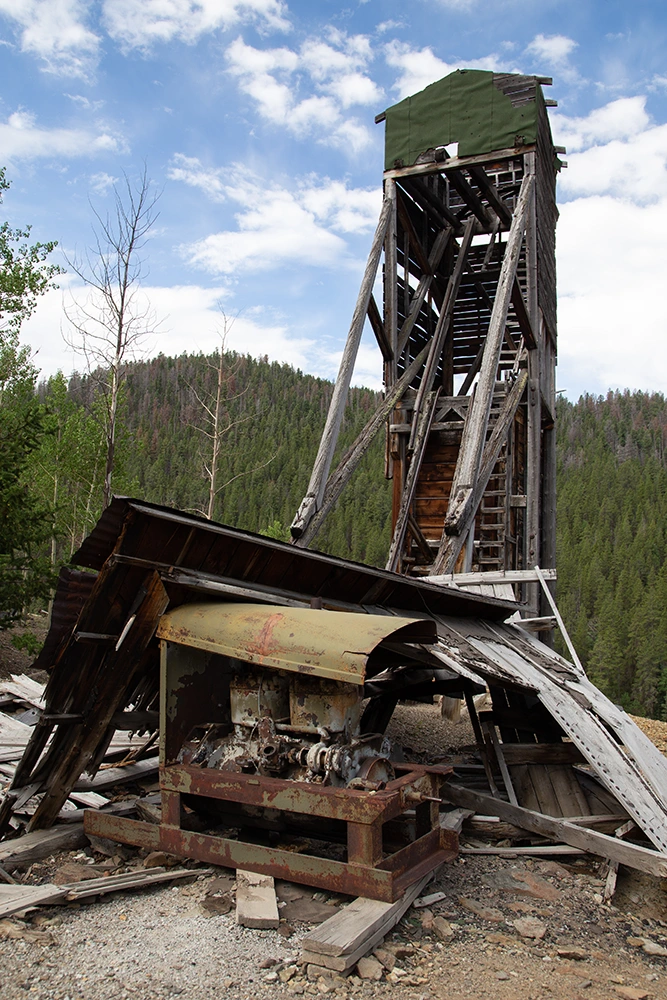
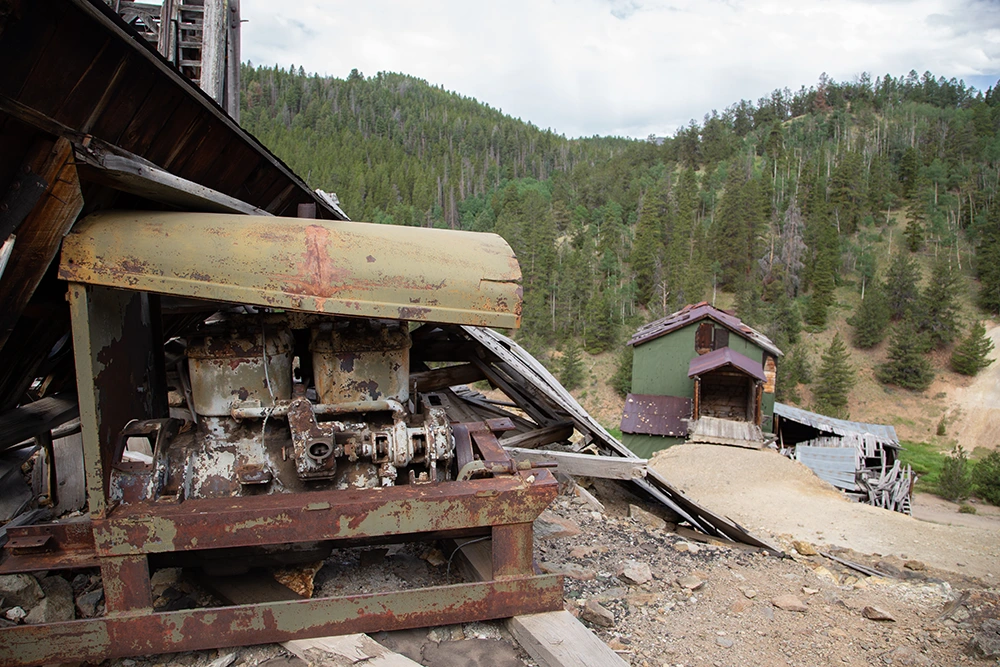
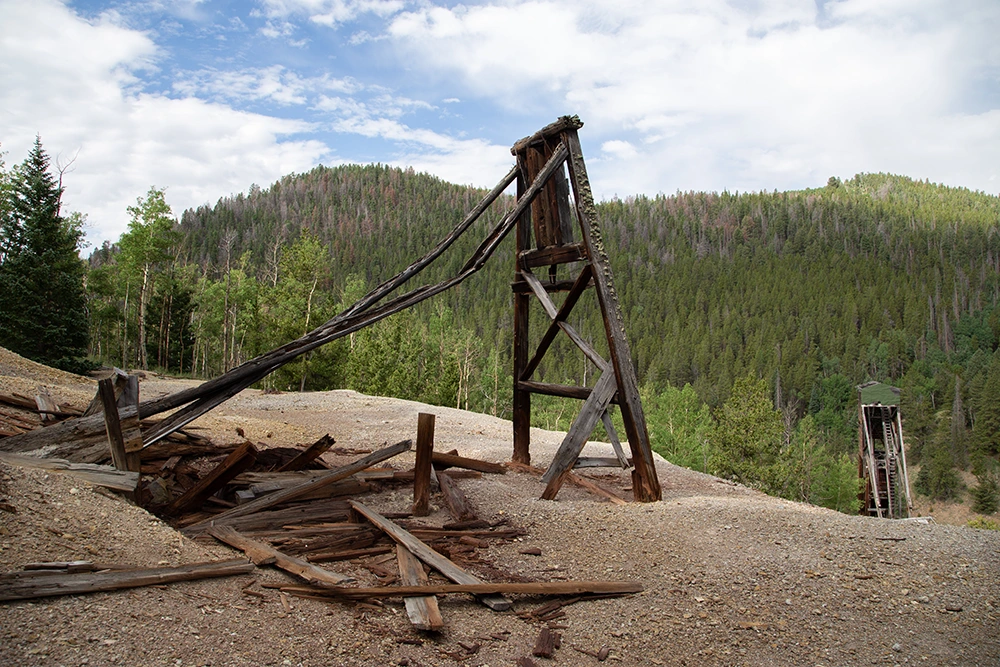
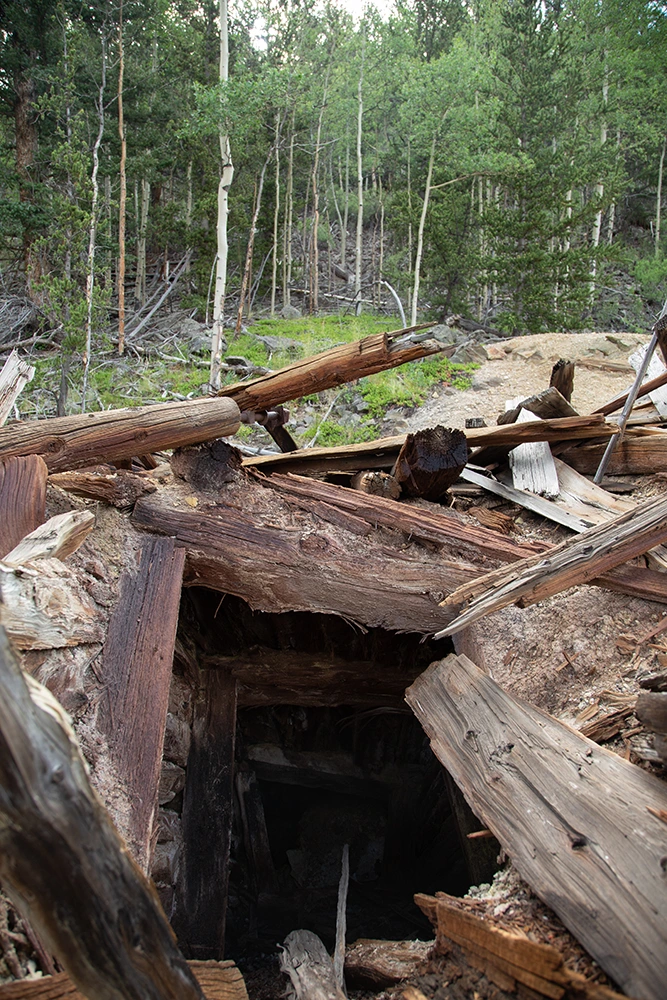
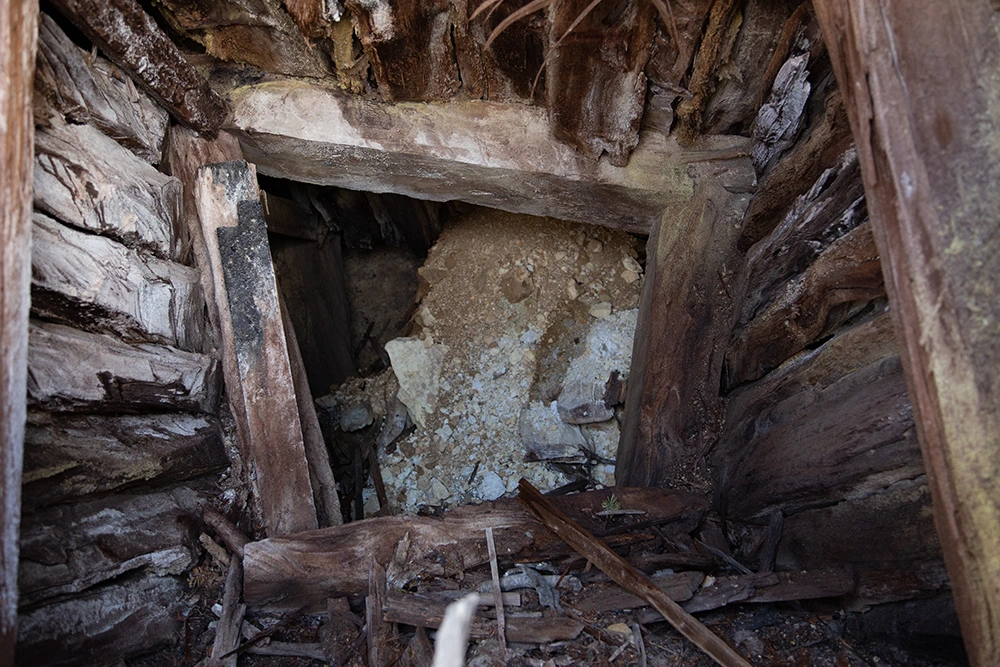
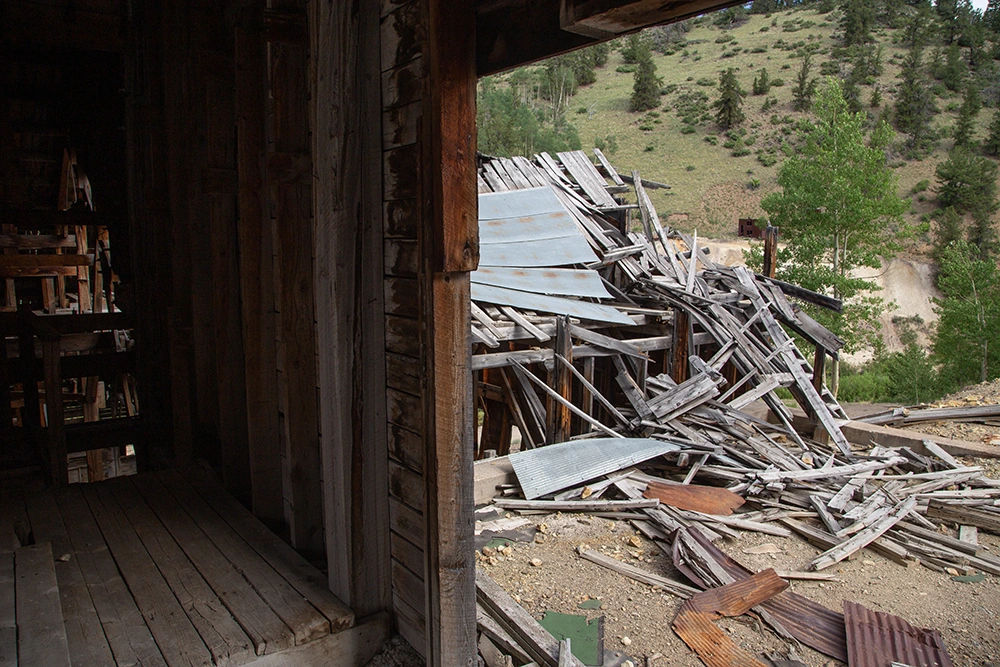
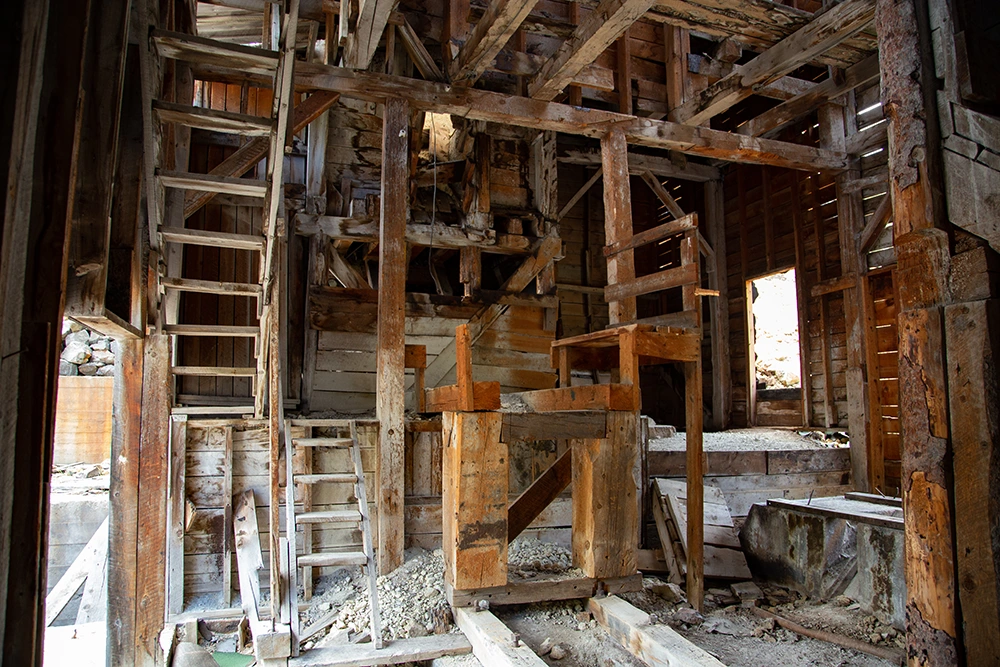
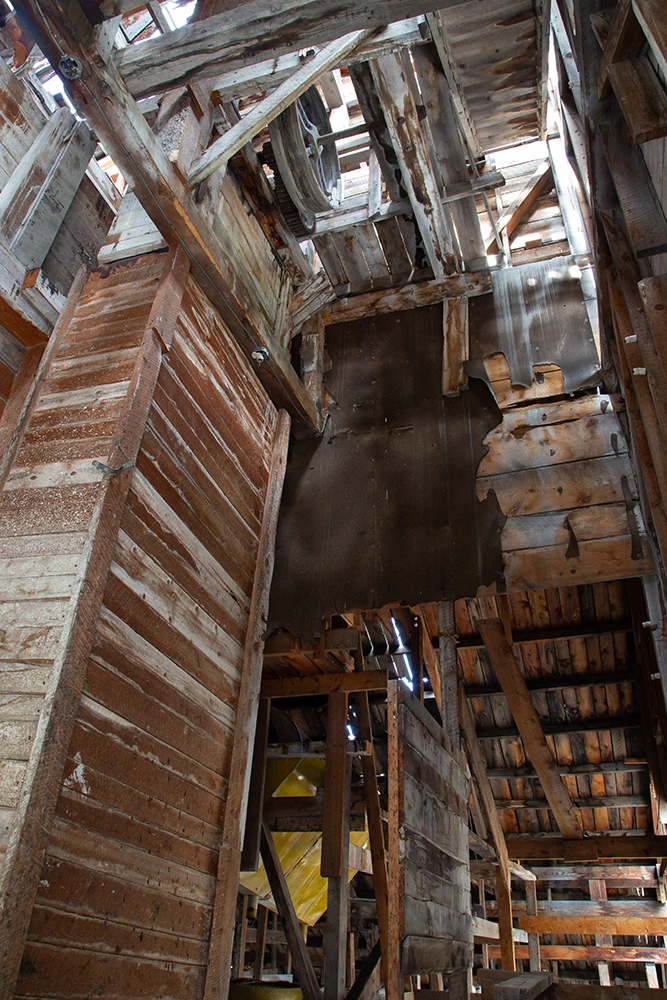
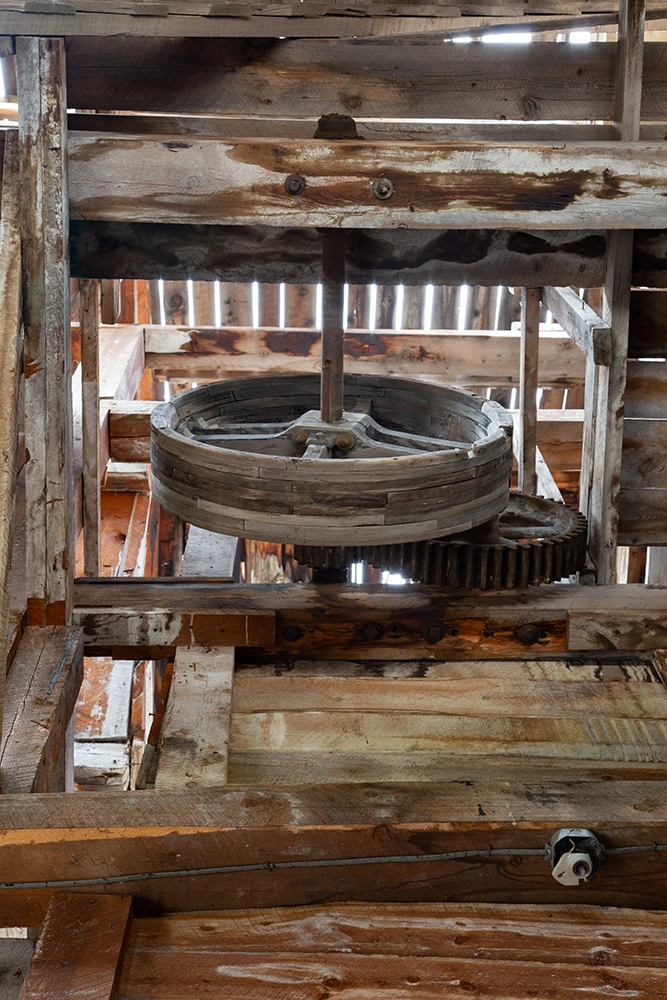
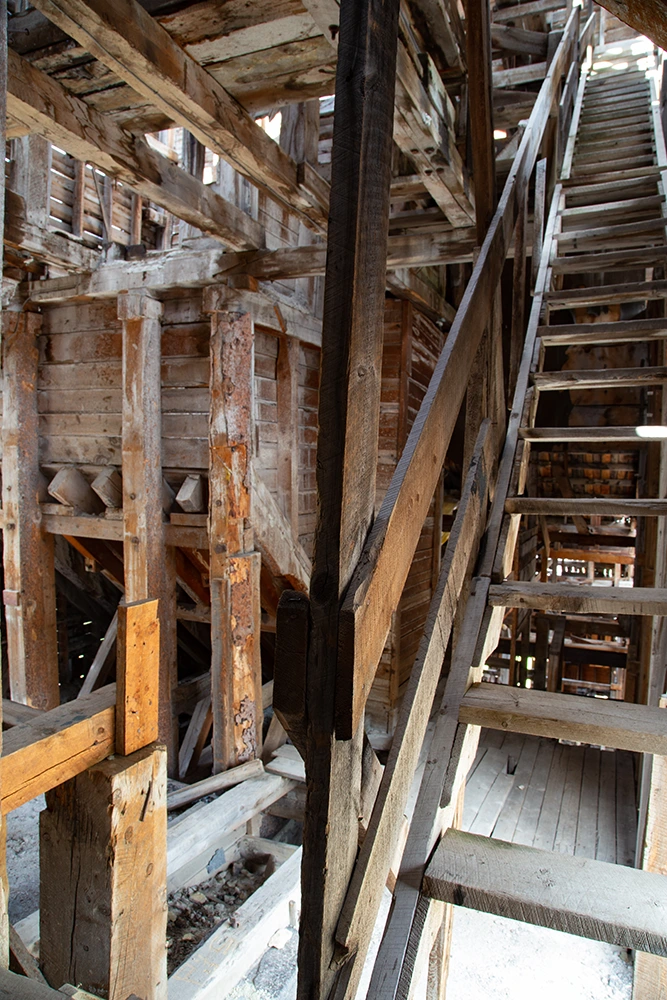
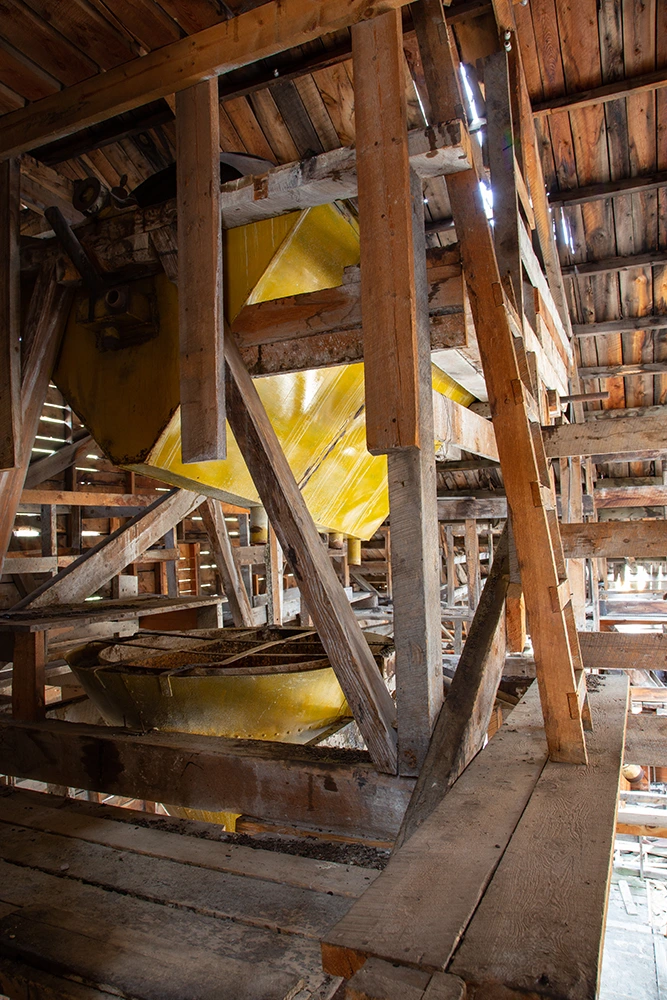
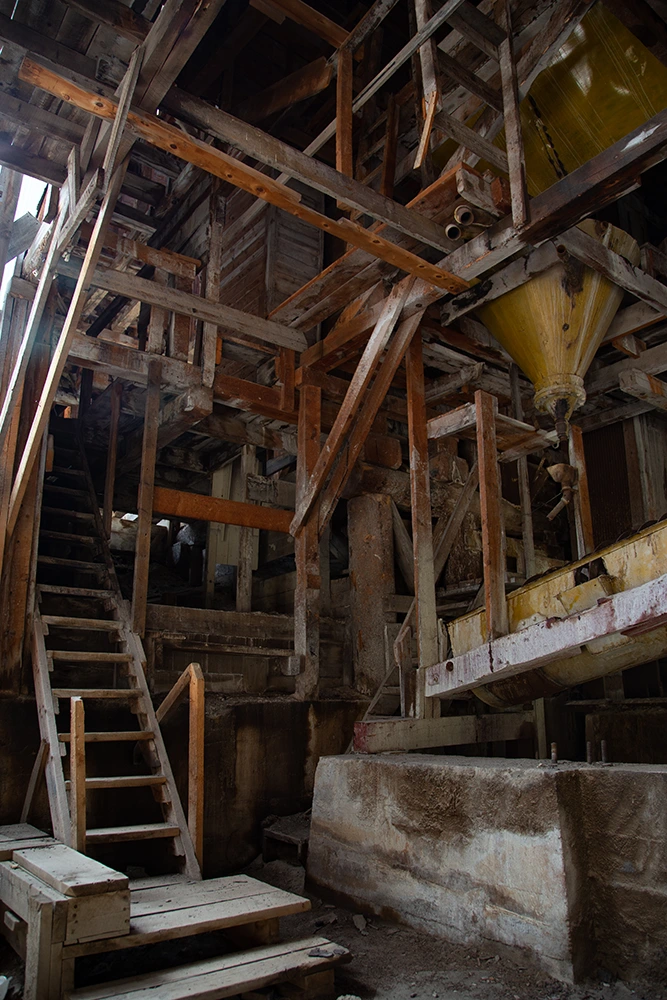
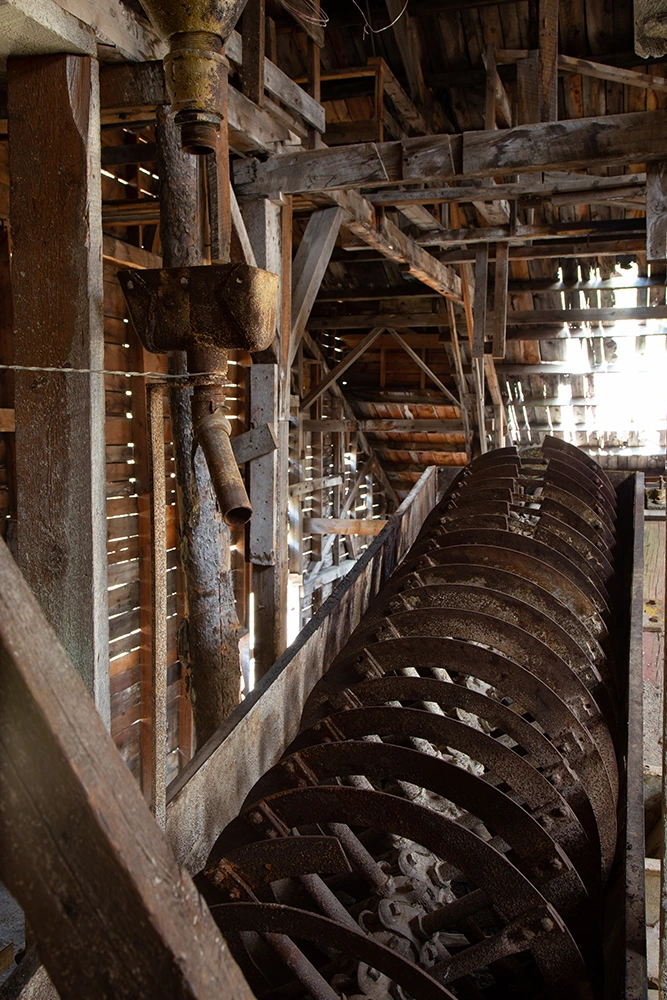
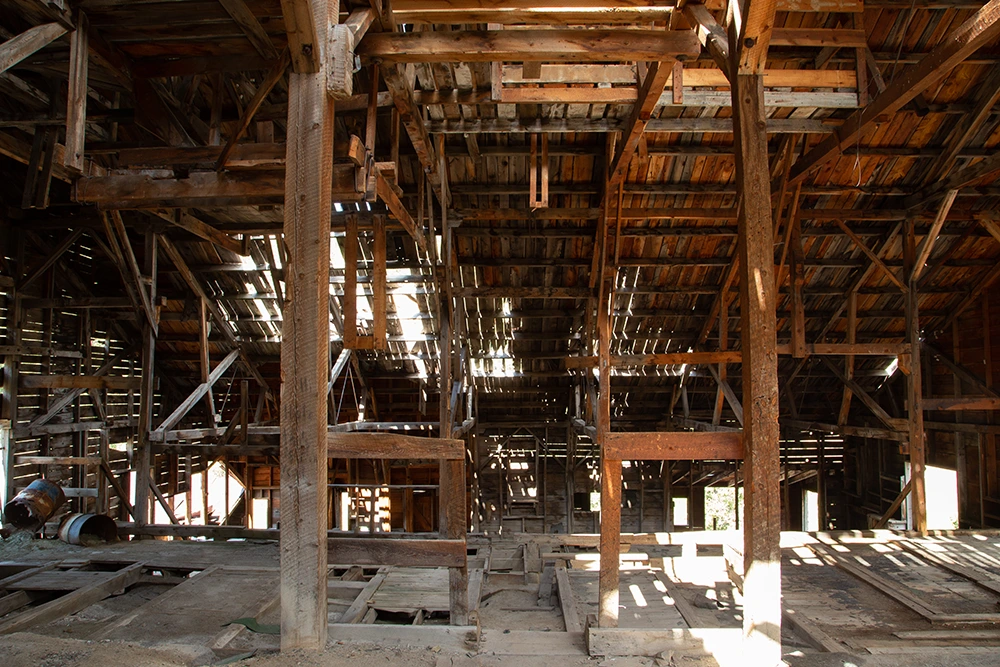
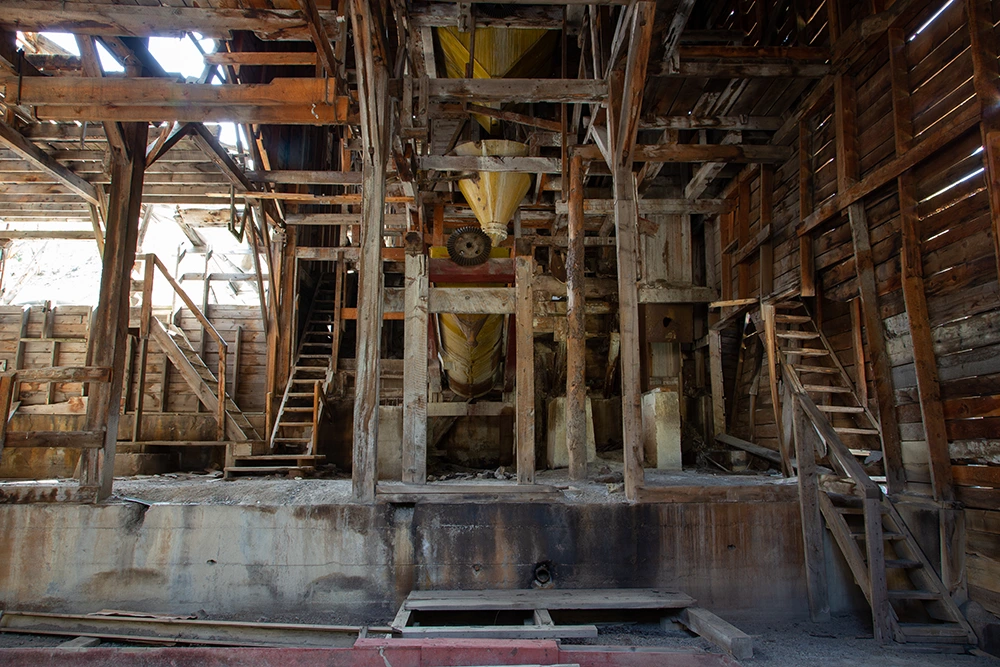
Rawley Mines
Rawley Mine was in the business of extracting Copper and Lead, among other minerals, at this location from 1882 until 1969.
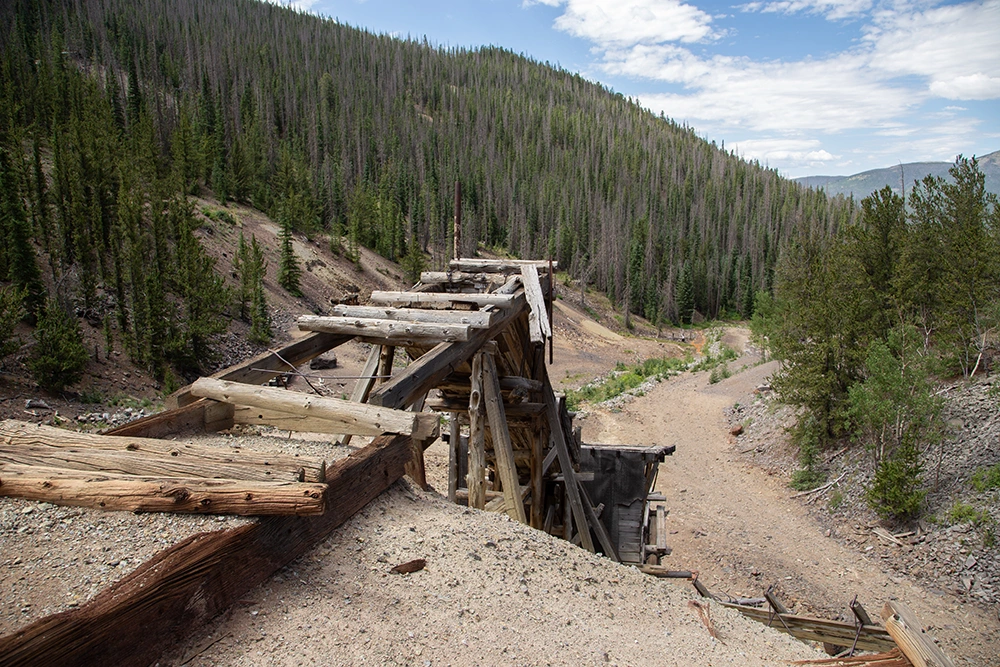
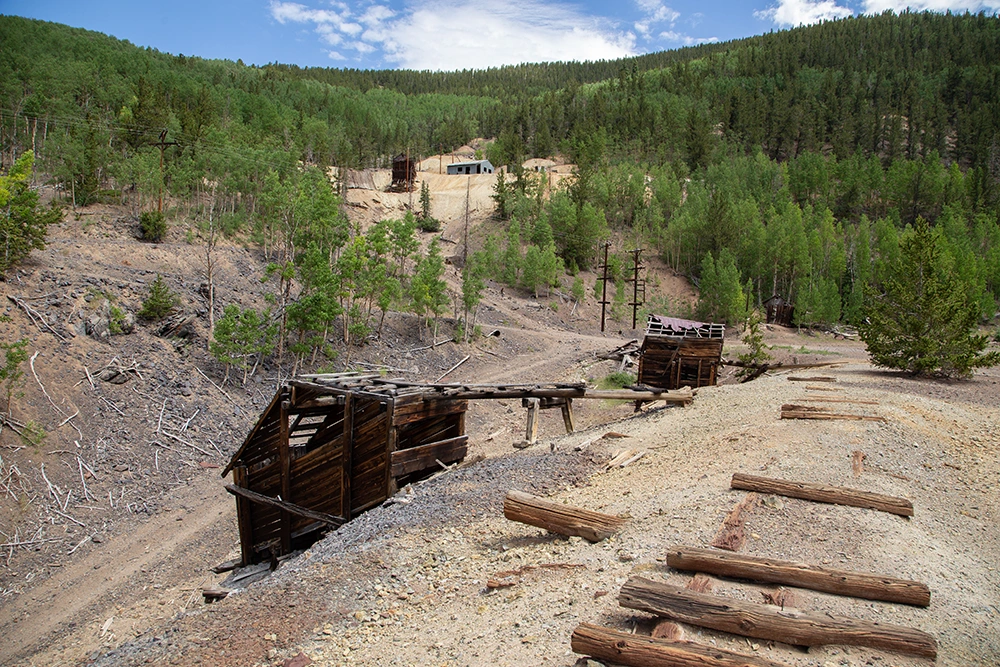
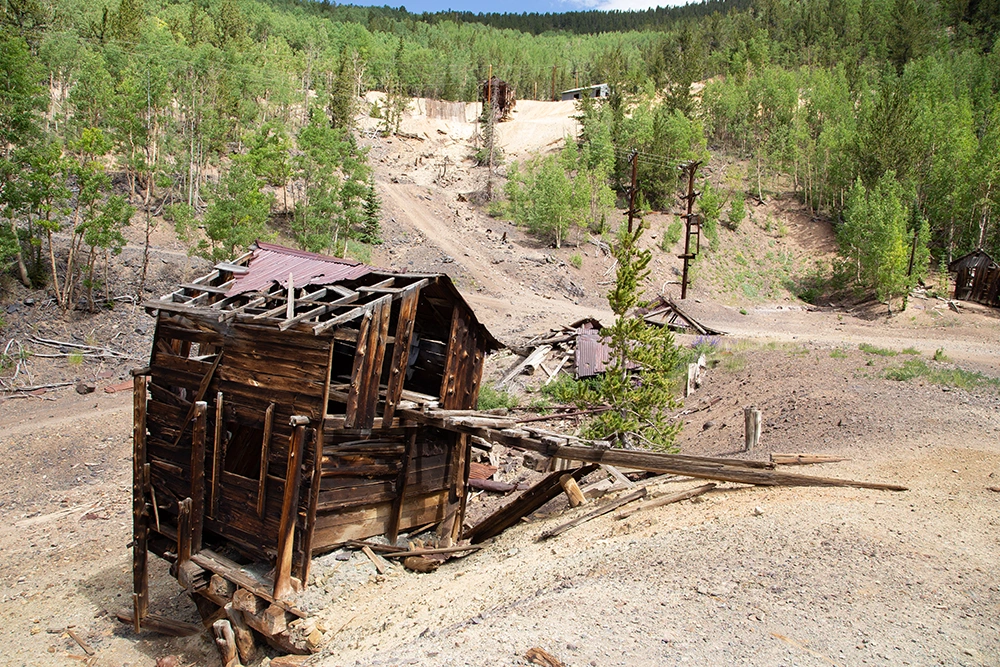
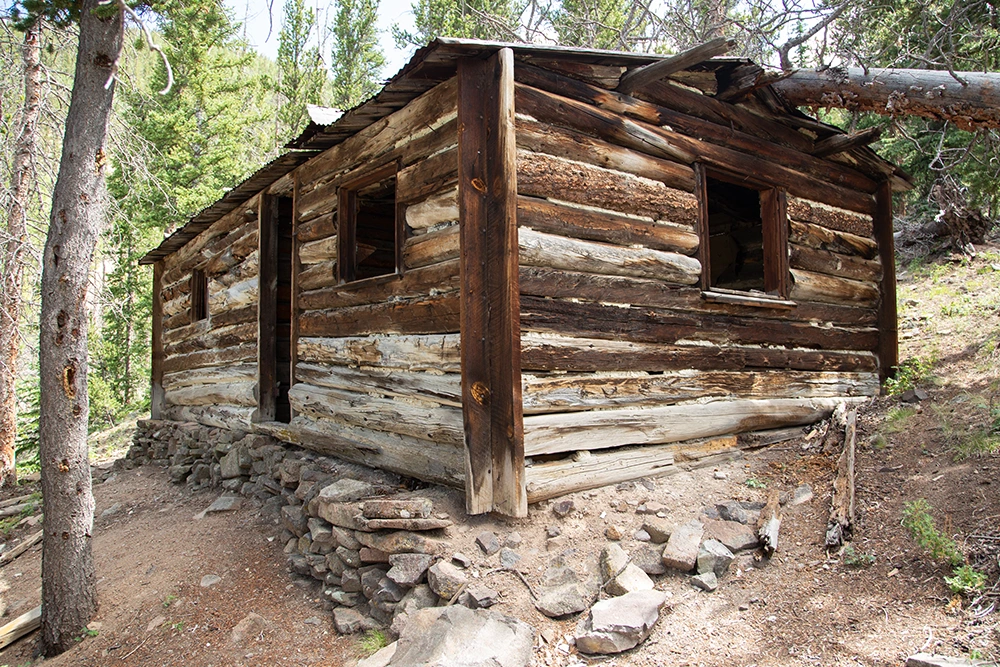
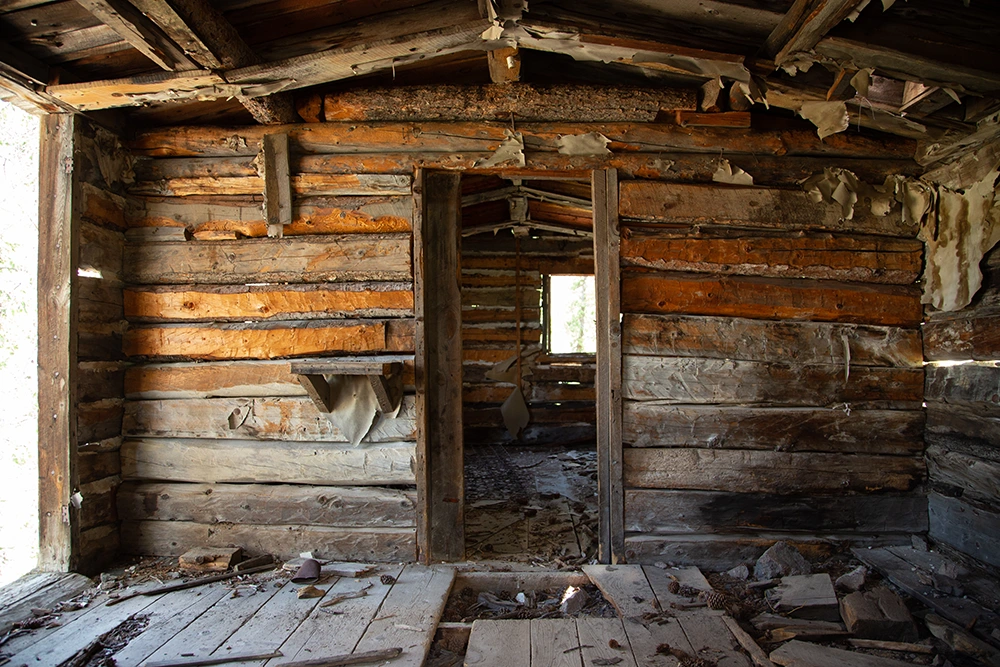
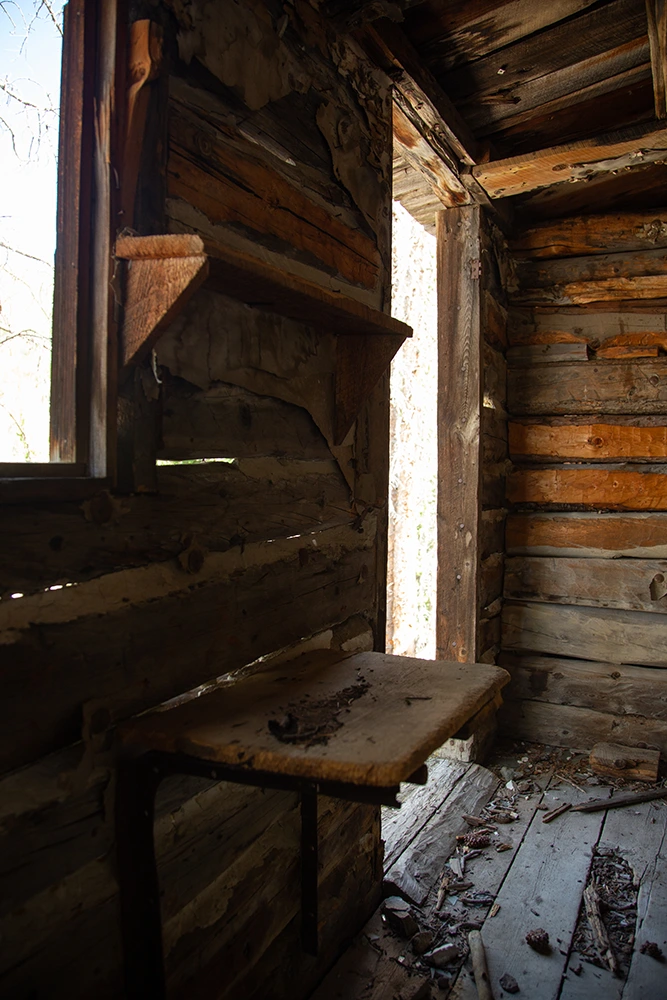
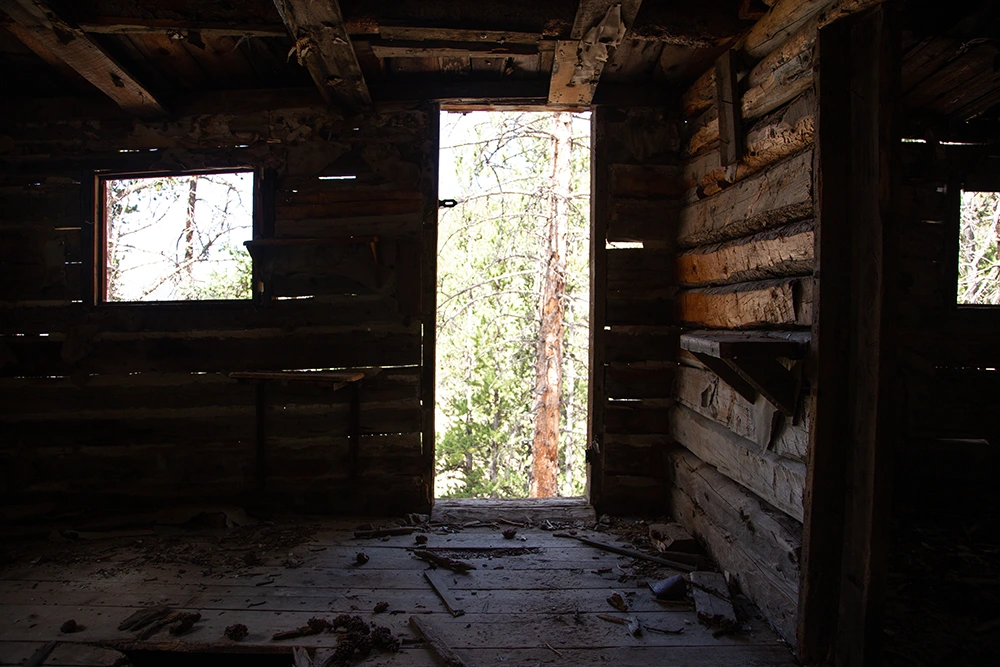
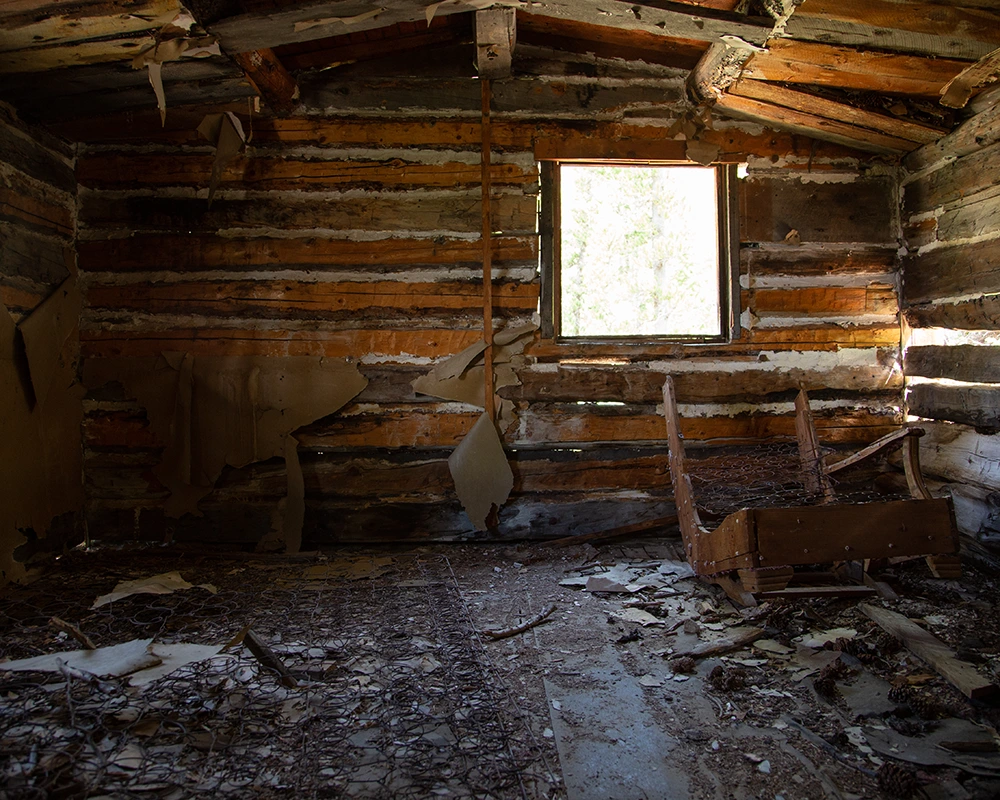
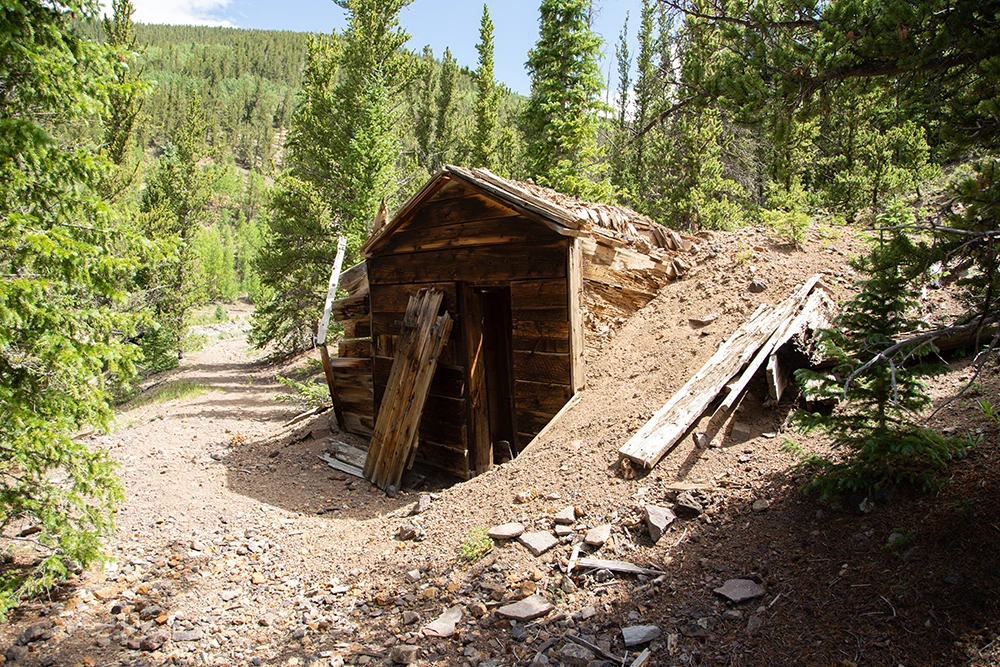
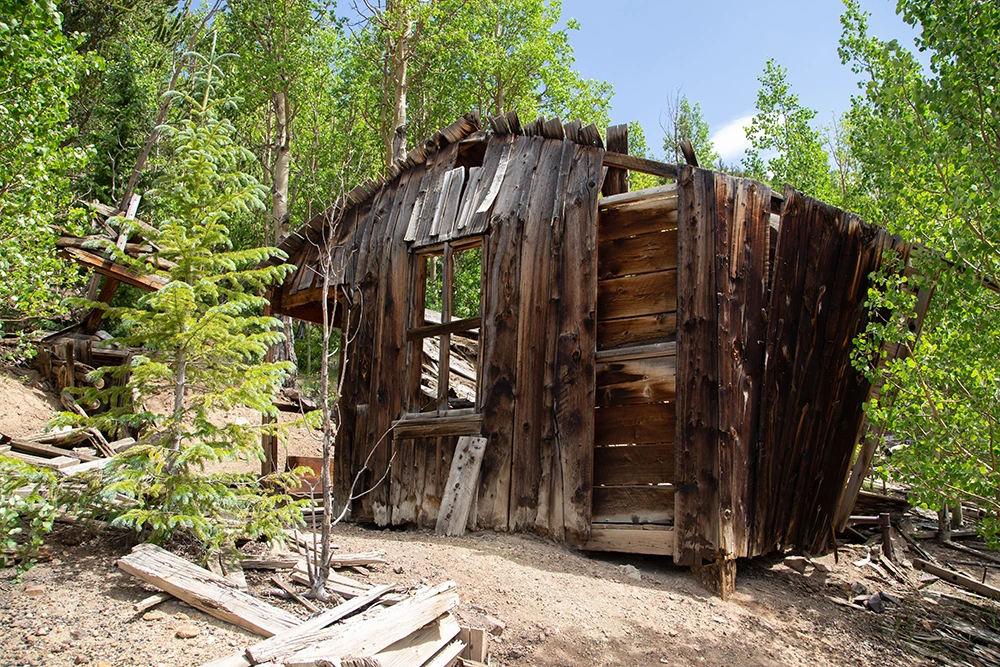
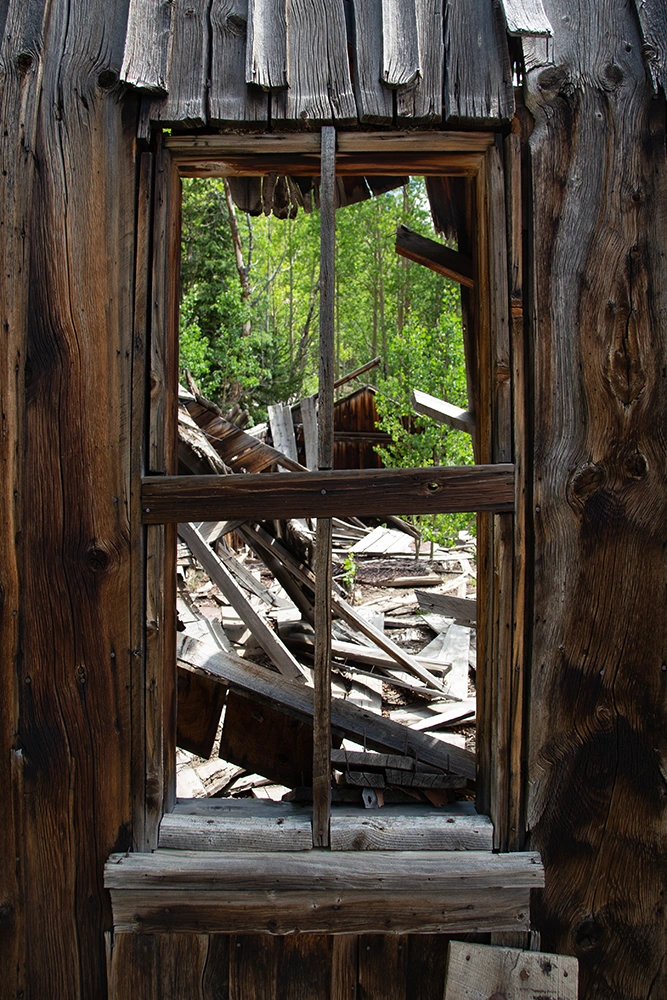
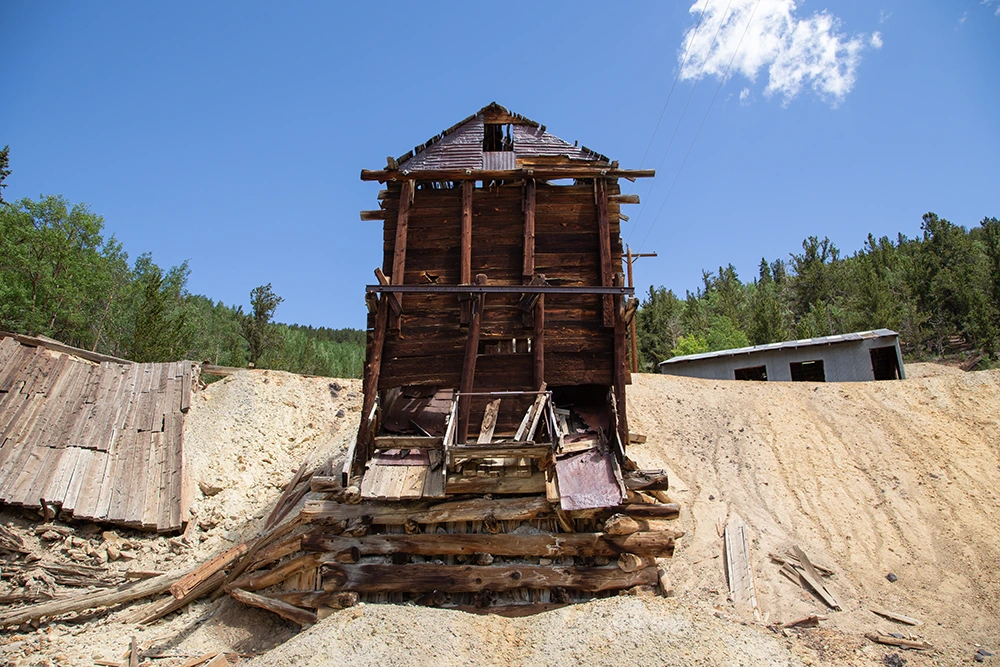
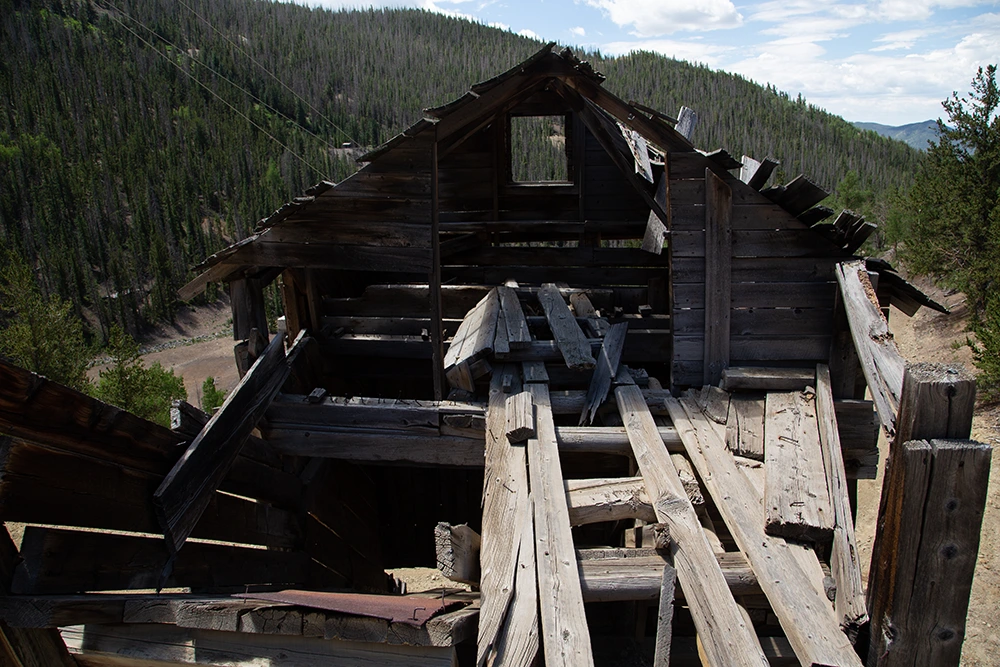
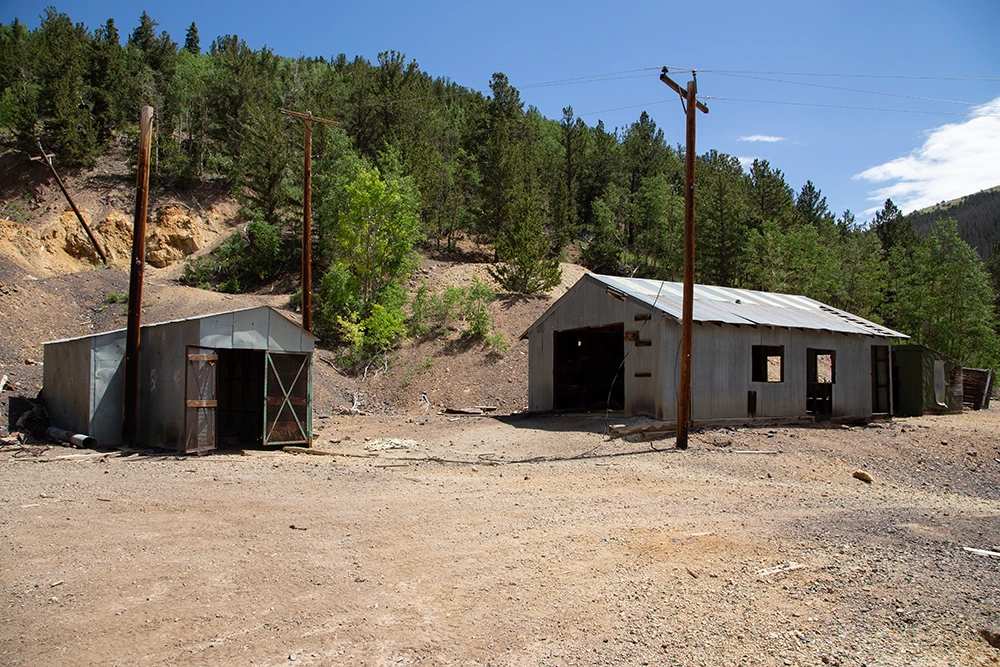
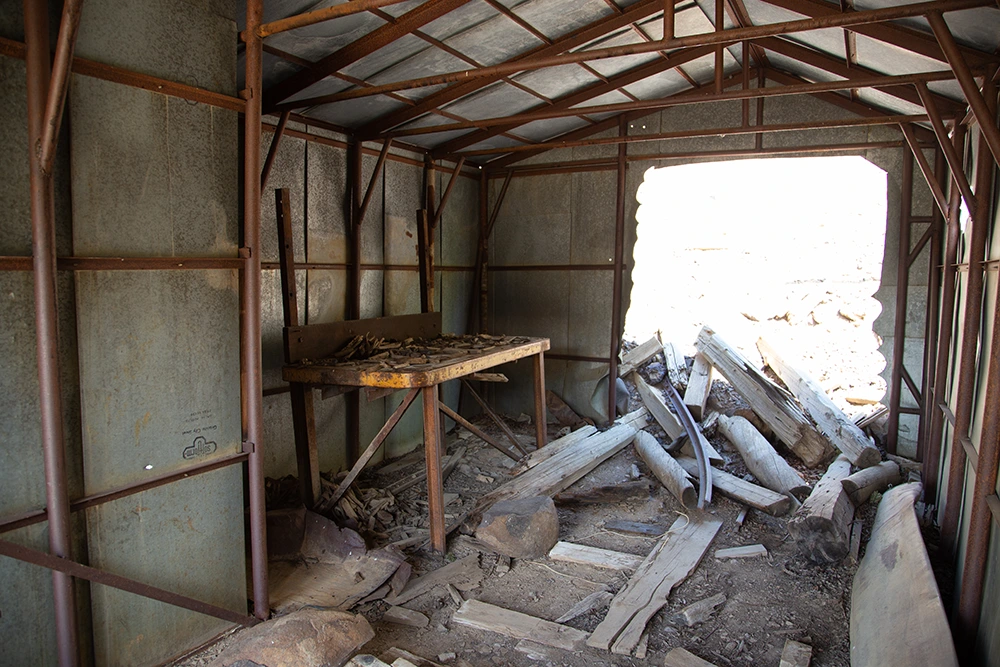
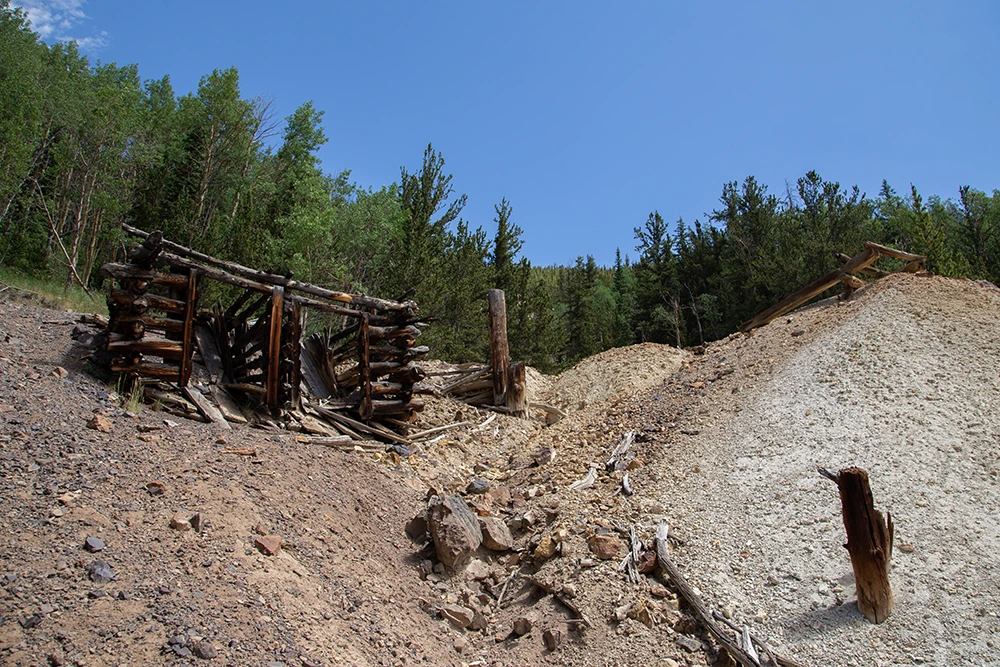
Probably where the "good stuff" was located. I'm confident there was a long lost pirate ship just out of reach..
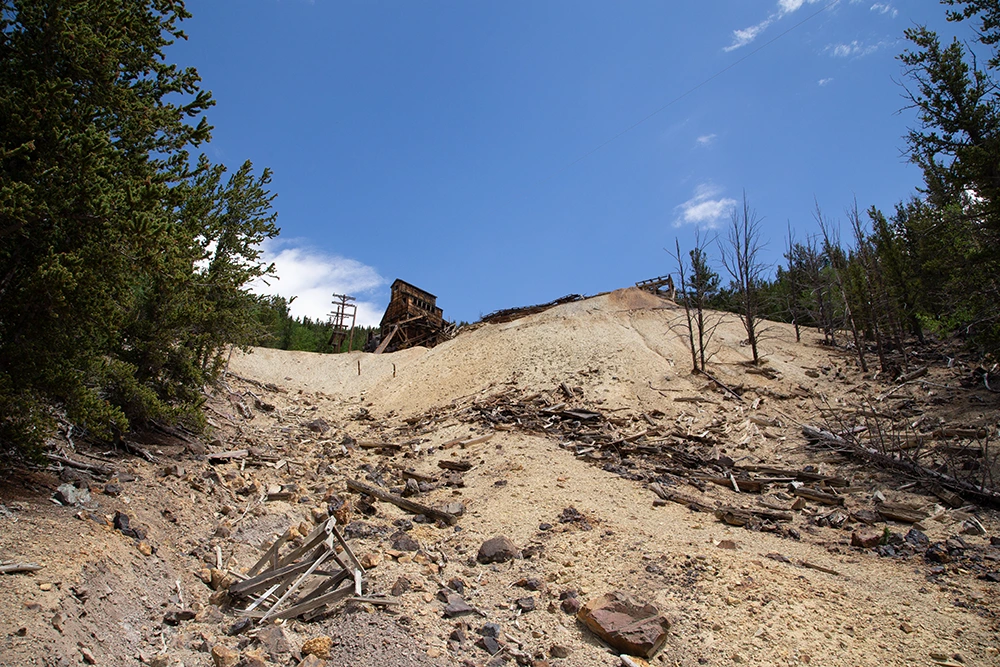
From the same position as above photo (at roughly 11,000 feet in elevation) facing the opposite direction back down at the valley below and realizing how far I had travelled in a mostly up direction.
